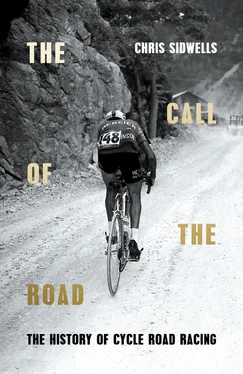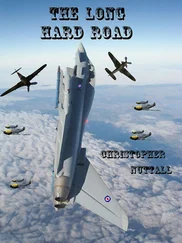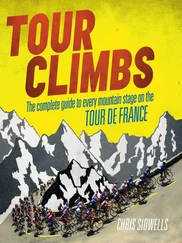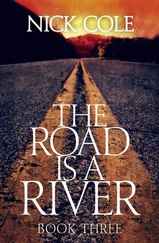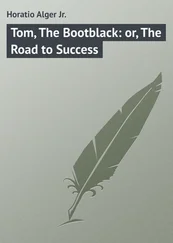Then in 1911 Paris–Tours was switched from September to the spring, when it was billed as the revenge race for Paris–Roubaix, which at the time was always held on Easter Sunday, giving rise to another name, La Pascale, for Paris–Roubaix. So if Easter was early, difficult weather could hit Paris–Tours. The worst conditions were in 1921 when the riders had to battle through freezing cold and snow. Only eight made it to Tours, with Francis Pelissier the winner. But gradually road conditions improved, the race distance was cut and, since the direct route to Tours is flat, Paris–Tours came to be known as the sprinters’ classic.
In 1951 the race moved to early October, so that it coincides with the start of the French hunting season. That’s when the obligatory Paris–Tours photographs first appeared, with the peloton cruising across the treeless Plaine de la Beauce, cheered on by groups of heavily armed men with hungry-looking dogs.
Paris–Tours settled nicely into its autumn slot, and the fact that a sprinter won most years didn’t upset anybody very much, apart from cycling journalists and the race organisers. Sprinters got a bad deal in the Fifties and Sixties, when they were regarded as a lower form of cycling life by the press. It was as if they thought sprinters won because they had been sneaky and duplicitous.
Happily, things have changed, and sprinting is seen in its true light today as one of the arts of cycling. Sprinters are admired for their speed, skill, race-craft, bravery and raw power. But back in more unenlightened times, a series of experiments began in 1959 designed to thwart sprinters and produce more ‘worthy’ winners of Paris–Tours. The organisers tried to change the race, to break it up and make it more difficult, which they thought would make it more interesting. But the changes either didn’t thwart the sprinters, or they were so big they altered the whole character of the race, so it wasn’t Paris–Tours any more. The event has gone back to its roots now, but with a few twists to ensure that the sprinters, if they win, don’t get the race handed to them on a plate.
Tours straddles the River Loire, and the northern approach to the city, the way you arrive direct from Paris, is flat. However, just south of the Loire there are lots of short sharp hills, so for the last edition of the race in the Fifties the organisers sent the riders through Tours, across the Loire, to complete four laps of a circuit in the suburb of Joue-les-Tours, which included the Côte de l’Alouette. The race finished at the top of this stiff little hill. In a wonderful irony the winner, Rik Van Looy, was one of the fastest sprinters of his time – and he dropped the field on the final climb. But he was a sprinter with a difference; he could do other things as well. More of Van Looy later.
So even with the Alouette climb near the end, more often than not Paris–Tours was still won by sprinters. Félix Lévitan, the race organiser and joint Tour de France director at the time, seemed to take this as a personal affront. So in 1965 he tried running Paris–Tours without the riders using derailleur gears. It threw the race back to the early days, when riders had a choice of gear ratios on their bikes but had to dismount to change them. Lévitan thought that would somehow change the outcome of Paris–Tours. It didn’t, not really.
That year a Dutchman, Gerben Karstens, won the fastest Paris–Tours to that date, clocking 45.029 kilometres per hour for 246.8 kilometres. Britain’s Barry Hoban rode that race, and he remembers how Karstens won:
We were allowed three sprockets on a free-wheel, and to change gear you had to stop, get off your bike and swap the chain by hand. That involved loosening the rear wheel. It was quite a long process and not one you wanted to do often in a fast race. If you did you’d end up chasing all the time, and get knackered well before the finish.
I chose 51 x 15 as the gear to start with, and I was going to swap to something a bit higher later on, but the race was so fast I didn’t dare stop at all. About 20 kilometres from the finish Karstens and his whole team stopped together and swapped their chains onto the 13 sprocket, and that’s how he won. By all stopping at the same time his team were able to pace him back up to the bunch. Then, because they had higher gears going into the finale, we were just revved out by them, and nobody could get around Karstens in the sprint.
The funniest thing that day was Jacques Anquetil. He thought the whole idea of not using derailleurs was ridiculous, and he didn’t like Félix Lévitan very much anyway. So he tried to ride all the way in 53 x 13. His team complained like mad because there were some hills in the Chevreuse Valley just after the start, and Jacques made them drop back and push him up them.
The equipment manufacturers disliked the no-derailleur rule even more than Anquetil, so it was abandoned after 1966, when a sprinter called Guido Reybrouck won anyway. But that only renewed Lévitan’s crusade to thwart the sprinters. In 1974 he switched the route around, so Paris–Tours became Tours–Versailles, then Blois–Chaville, and later Blois–Montlhéry, then Creteil–Chaville, all done in an effort to toughen up the race. Eventually its identity got so lost that the race was called the GP de l’Automne. It was a debacle really; it was always meant to be the sprinters’ classic, the perfect race for awarding the Ruban Jaune.
The Ruban Jaune, or yellow ribbon, was created in 1936, and is still awarded to the rider who wins a road race of 200 kilometres or more with the fastest average speed to date. Gustaf Daneels was the first holder of the Ruban Jaune when he won Paris–Tours in 1936 at an average speed of 41.45 kph. It set a precedent.
Of the twelve times the Ruban Jaune has been awarded, Paris–Tours was the race where the speed record was set on nine occasions. Amazingly, Paris–Roubaix has held it twice, and another old race once regarded as a classic, Paris–Brussels, had it once. The current Ruban Jaune was set in 2015 when Matteo Trentin won Paris–Tours at the cracking pace of 49.641 kph.
At times Paris–Tours has been a long way shy of the fastest 200-kilometre-plus road race in the world. In 1988, when it made its comeback as Paris–Tours after being routed all over the place, the riders faced a howling headwind and torrential rain that pinned them down to a 34 kph average. It was almost dark when the bunch sprinted it out on the Avenue de Grammont. The Dutch rider Peter Pieters was the winner of that slow-motion Paris–Tours; the sprinters’ classic.
So far I’ve not written anything about road racing in Spain, because the sport was a little slower to take hold there than in most major European countries. But there were races early on in Spain, some of which are going strong today. The oldest is the Volta a Catalunya, which dates back to 1911 and is the fourth-oldest stage race behind the Tour de France, the Tour of Belgium and the Giro d’Italia.
It was another race created by a newspaper, this time the Barcelona-based El Mundo Deportivo working with the then president of the Spanish Cycling Union, Narcisse Masferrer. The first Volta a Catalunya was very different to the first Tour de France or Giro d’Italia; it was held in early January, was only three stages long, and totalled just 363 kilometres. The modest length and distance probably reflected the factor that held Spanish road racing back for a while: a lack of usable roads. Even as late as the Sixties, stages held to publicise the embryonic Spanish seaside resorts saw riders bussed in over rough gravel roads to ride circuits of the only tarmac strips in town.
The first three editions of the Volta a Catalunya were domestic affairs with all-Spanish podiums. The next two editions in 1920 and 1923 were won by a Frenchman, José Pelletier and Maurice Ville. After that the Volta a Catalunya has run every year, except at the height of the Spanish Civil War in 1937
Читать дальше
